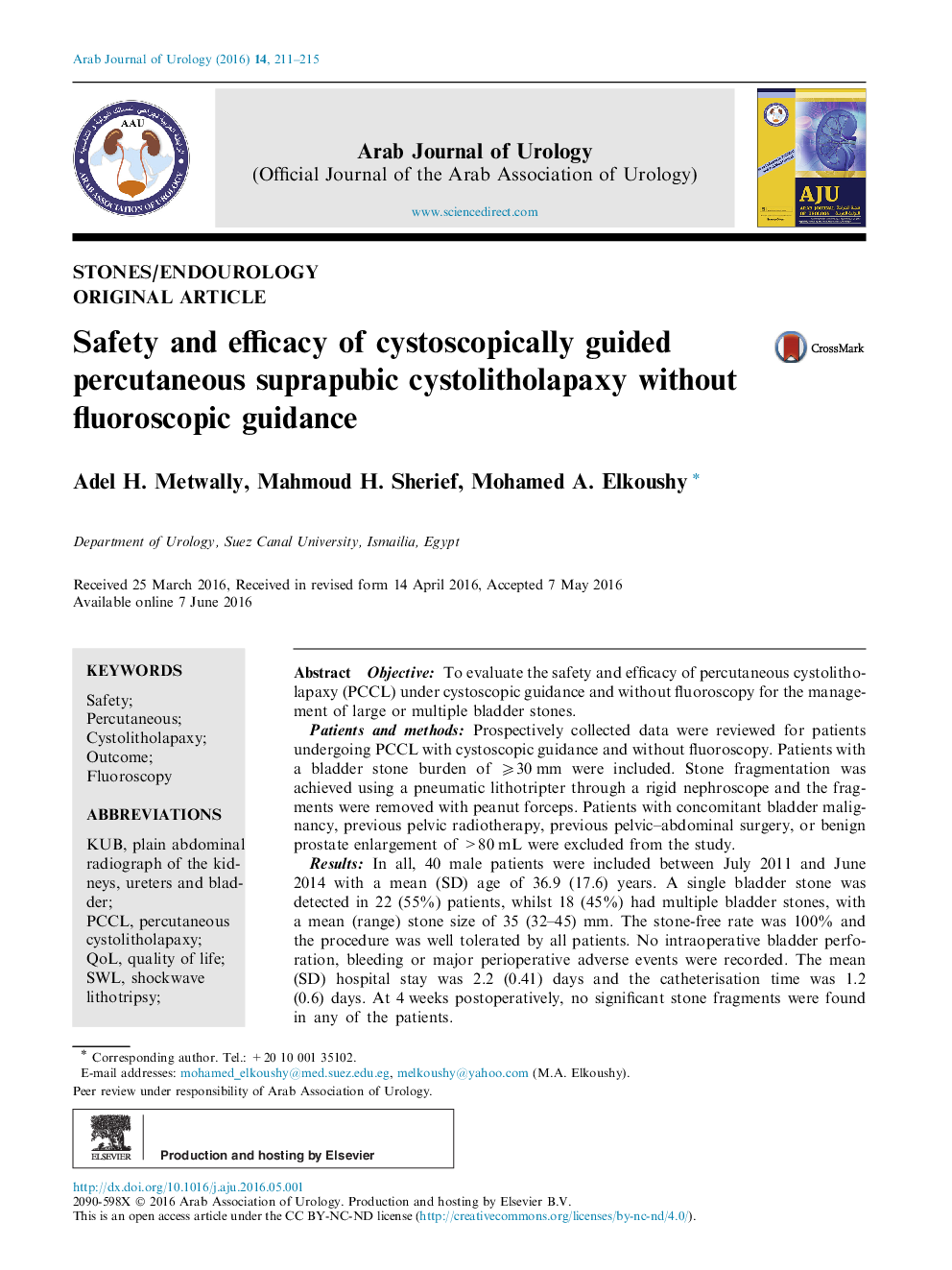| Article ID | Journal | Published Year | Pages | File Type |
|---|---|---|---|---|
| 4267906 | Arab Journal of Urology | 2016 | 5 Pages |
ObjectiveTo evaluate the safety and efficacy of percutaneous cystolitholapaxy (PCCL) under cystoscopic guidance and without fluoroscopy for the management of large or multiple bladder stones.Patients and methodsProspectively collected data were reviewed for patients undergoing PCCL with cystoscopic guidance and without fluoroscopy. Patients with a bladder stone burden of ⩾30 mm were included. Stone fragmentation was achieved using a pneumatic lithotripter through a rigid nephroscope and the fragments were removed with peanut forceps. Patients with concomitant bladder malignancy, previous pelvic radiotherapy, previous pelvic–abdominal surgery, or benign prostate enlargement of >80 mL were excluded from the study.ResultsIn all, 40 male patients were included between July 2011 and June 2014 with a mean (SD) age of 36.9 (17.6) years. A single bladder stone was detected in 22 (55%) patients, whilst 18 (45%) had multiple bladder stones, with a mean (range) stone size of 35 (32–45) mm. The stone-free rate was 100% and the procedure was well tolerated by all patients. No intraoperative bladder perforation, bleeding or major perioperative adverse events were recorded. The mean (SD) hospital stay was 2.2 (0.41) days and the catheterisation time was 1.2 (0.6) days. At 4 weeks postoperatively, no significant stone fragments were found in any of the patients.ConclusionPCCL under cystoscopic control and without fluoroscopy seems to be an effective and safe technique to remove large or multiple bladder calculi. It represents an alternative treatment option, especially in situations where fluoroscopy is not available, and radiation hazards can be avoided.
